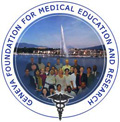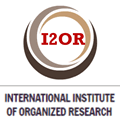Caracterización epidemiológica, clínica, histológica y postquirúrgica de pacientes con diagnóstico de cáncer de esófago
Palabras clave:
neoplasias esofágicas, epidemiología, signos y síntomas, factores de riesgo, periodo posoperatorioResumen
Introducción: el cáncer esofágico se origina en la mucosa del esófago y se expande hacia la capa muscular y la adventicia en la medida que se produce su crecimiento. En dependencia del tipo de célula en la que se origine tiene lugar el carcinoma epidermoide o carcinoma de células escamosas y el adenocarcinoma.Objetivo: describir las características epidemiológicas, clínicas, histológicas y postquirúrgicas de pacientes con diagnóstico de cáncer de esófago operados en el Hospital “Arnaldo Milián Castro”.
Métodos: se realizó un estudio descriptivo, longitudinal prospectivo, en el período de enero de 2010 a diciembre de 2021. La población de estudio estuvo conformada por 71 pacientes.
Resultados: 58 pacientes (81,6%) fueron del sexo masculino y las edades más frecuentes oscilaron entre los 60 y los 69 años. El hábito de fumar y el consumo de alcohol fueron los factores de riesgo más frecuentes. Dos pacientes no tenían factores de riesgo conocidos. Las complicaciones infecciosas (49,3) y las quirúrgicas (36,6%) predominaron. Egresaron vivos 51 pacientes (71,8%).
Conclusiones: predominó el sexo masculino y el grupo etario de 60 a 69 años, el hábito de fumar fue el factor de riesgo que más prevaleció y la disfagia el síntoma cardinal. El segmento esofágico más afectado fue el tercio medio, con el diagnóstico histológico de carcinoma epidermoide. Predominaron las complicaciones infecciosas, con una estadía hospitalaria media de 10 a 19 días. La mayoría de los pacientes egresaron vivos.
Descargas
Citas
1.Jáuregui-Francia FT, Jáuregui-Caycho L, Figueroa-Bejarano MR, Jáuregui-Figueroa MR, Purilla-Janto JM. Manejo actualizado en el tratamiento quirúrgico del cáncer de esófago. Rev Fac Med Hum [Internet]. 2018 [citado 26/01/2022];18(4):59–64. Disponible en: http://revistas.urp.edu.pe/index.php/RFMH/article/view/1732/1650. http://dx.doi.org/10.25176/RFMH.v18.n4.1732
2.Baghetto Italo T, Enrique Daniela T. Cáncer de Esófago. En: Duarte Rojas M, Gómez Marinkovic B. Cirugía en Medicina General. Manual de Enfermedades Quirúrgicas. Santiago de Chile: Centro de Enseñanza y Aprendizaje, Facultad de Medicina, Universidad de Chile; 2020.
3.Montiel Roa AJ, Dragotto Galván A, Mereles LM, Mora Garbini SD, Rojas Franco BM, Balmaceda Rodrígues BB. Prevalencia del cáncer de esófago y su tratamiento quirúrgico en un hospital de alta complejidad durante el periodo enero 2016 - diciembre 2018. Cir Parag [Internet]. 2020 [citado 26/01/2022];44(1):12-15. Disponible en: http://scielo.iics.una.py/pdf/sopaci/v44n1/2307-0420-sopaci-44-01-12.pdf. http://dx.doi.org/10.18004/sopaci.2020.abril. 12-15
4.Valdovinos Andraca F, Bernal Méndez AR. Esófago de Barrett: experiencia de 10 años en un centro de tercer nivel en México. Rev Gastroenterol Méx. [Internet]. 2018 [citado 26/01/2022];83(1):25-30. Disponible en: https://www.sciencedirect.com/science/article/pii/S037509061730071X. https://doi.org/10.1016/j.rgmx.2017.03.007
5.Koury K, Hernández R, López D. Complicaciones de esofagectomías. Rev Venez Oncol [Internet]. 2017 [citado 06/04/2022];29(4):252-259. Disponible en: https://www.redalyc.org/journal/3756/375652706006/html/
6.Gallego Plazas J. Cáncer de esófago. 28/11/2022 [citado 30/11/2022]. En: Sociedad Española de Oncología Médica [Internet]. Madrid: SEOM; 2021. Disponible en: https://seom.org/info-sobre-el-cancer/esofago?start=1
7.Zaninotto G, Markar S. Carcinoma precoz de esófago. Una perspectiva occidental. Cir Esp [Internet]. 2017 [citado 06/04/2022];96(8):463–465. Disponible en: https://www.elsevier.es/es-revista-cirugia-espanola-36-articulo-carcinoma-precoz-esofago-una-perspectiva-S0009739X17302336
8.Elizalde Frez JI. Cáncer de Esófago. En: Farreras Rozman, Medicina Interna. 18a ed. Barcelona: Eslevier; 2016. p. 85-88.
9.Torpy JM, Burke AE, Glass RM. JAMA patient page. Esophageal cancer. JAMA [Internet]. 2010 [citado 10/06/2022];304(6):704. Disponible en: https://pubmed.ncbi.nlm.nih.gov/20699465/. https://doi.org/10.1001/jama.304.6.704
10.Hernández Cortés K, Medina García C, Hernández Cortés N. Caracterización clínica, epidemiológica y anatómica del cáncer de esófago. Rev Cubana Med Gen Integr [Internet]. 2020 [citado 10/06/2022];36(4):1-12. Disponible en: http://scielo.sld.cu/scielo.php?script=sci_arttext&pid=S0864-21252020000400011
11.Nazario Dolz AM, Suárez Rodríguez JA, Romero García LI, Falcón Vilariño GC, Matos Tamayo ME, Rodríguez Fernández Z. Complicaciones de la esofagectomía por cáncer de esófago. Rev Cubana Cir [Internet]. 2022 [citado 30/11/2022];61(2):e_1331. Disponible en: http://scielo.sld.cu/scielo.php?script=sci_arttext&pid=S0034-74932022000200003
12.Cancer.Net [Internet]. Virginia: American Society of Clinical Oncology; c2005-2020 [actualizado 30/10/2019; citado 10/06/2022]. Cáncer de esófago: Factores de riesgo; [aprox. 2 pantallas]. Disponible en: https://www.cancer.net/es/tipos-de-c%C3%A1ncer/c%C3%A1ncer-de-es%C3%B3fago/factores-de-riesgo
13.Piedra Lauzán UJ, Leal Mursulí A, Cepero Nogueira M, Collera Rodríguez SA, Madrigal Batista G, Rodríguez Rodríguez I, et al. Cáncer de esófago. Investig Médicoquirúrg [Internet]. 2011 [citado 18/06/2022];3(2):142-154. Disponible en: http://www.revcimeq.sld.cu/index.php/imq/article/view/25
14.Norero EE, Ceroni M, Martínez C, Mejía R, Muñoz R, Godoy C. Complicaciones postoperatorias en esofagectomía por cáncer. Evaluación de 215 casos según definiciones del grupo de consenso internacional. Rev Cir [Internet]. 2020 [citado 18/06/2022];72(5):427-433. Disponible en: https://www.scielo.cl/scielo.php?script=sci_arttext&pid=S2452-45492020000500427. http://dx.doi.org/10.35687/s2452-45492020005600
Descargas
Publicado
Cómo citar
Número
Sección
Licencia
Aquellos autores/as que tengan publicaciones con esta revista, aceptan los términos siguientes:
- Los autores/as conservarán sus derechos de autor y ceden a la revista el derecho de primera publicación de su obra, el cuál estará simultáneamente sujeto a una licencia Creative Commons Atribución/Reconocimiento-NoComercial 4.0 Internacional — CC BY-NC 4.0 que permite a terceros compartir la obra siempre que se indique su autor y su primera publicación esta revista.
- Los autores/as podrán adoptar otros acuerdos de licencia no exclusiva de distribución de la versión de la obra publicada (p. ej.: depositarla en un repositorio institucional o publicarla en un volumen monográfico) siempre que se indique la publicación inicial en esta revista.
- Se permite y recomienda a los autores/as difundir su obra a través de Internet (p. ej.: en archivos telemáticos institucionales o en su página web) antes y durante el proceso de envío, lo cual puede producir intercambios interesantes y aumentar las citas de la obra publicada. (Véase El efecto del acceso abierto).





 15 diciembre del 2025
15 diciembre del 2025


